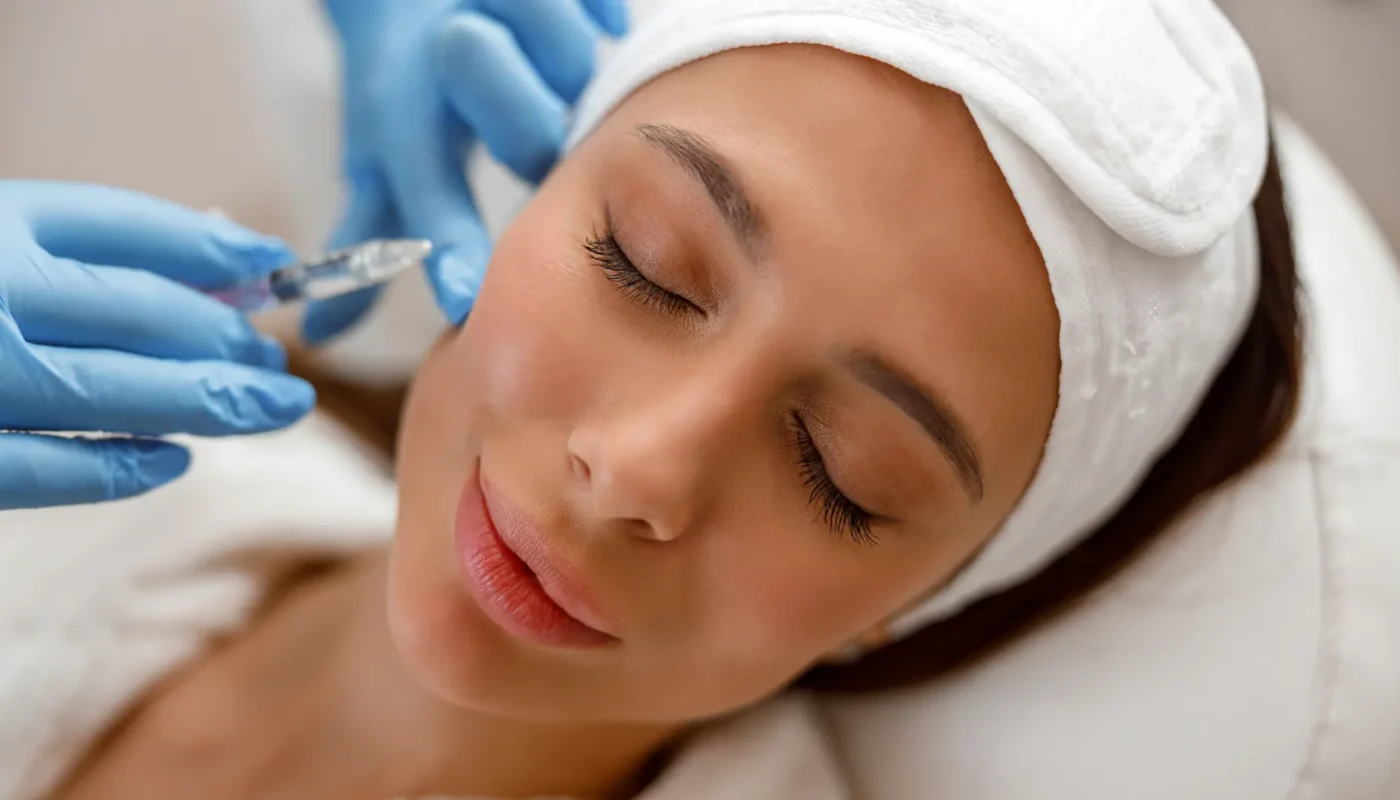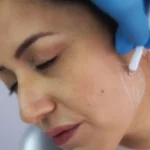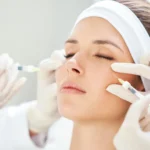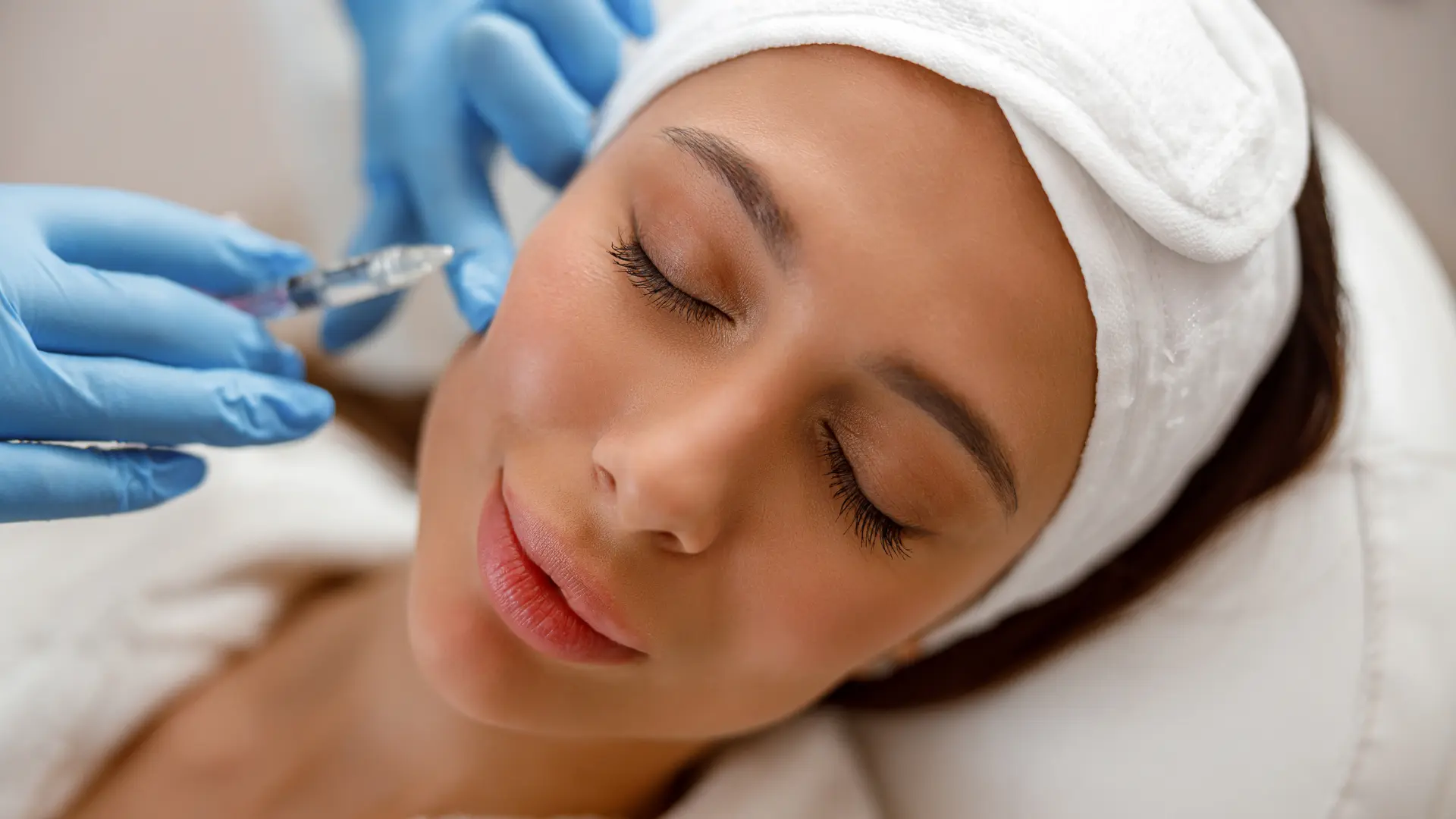
Recent statistics from the American Society of Plastic Surgeons reveal that the average cost of cheek implants is $3,781. This significant investment underscores the growing interest among individuals in enhancing their facial aesthetics, particularly their cheeks.
The cheeks are one of the facial areas that aging will most likely affect. The mid-face area may begin to sag or lose volume as people age, subtly altering the appearance. Fortunately, Sculptra, with its unique mechanism of action, has emerged as an effective solution to address these signs of aging.
This article will focus on using Sculptra cheekbones treatment, proper injection technique, patient selection, and potential outcomes.
Key Takeaways
- Sculptra can safely and effectively benefit people with healthy immune systems for its approved treatment areas and uses.
- Providers must limit the use of Sculptra to a single regimen of up to four sequential sessions spaced three to four weeks apart.
- Patients should understand that these injections can cause potential Sculptra side effects after treatments.
- Completing the recommended treatment sessions and administration by medical professionals can maximize the Sculptra benefits and deliver optimal outcomes.
About: Medica Depot is your trusted all-in-one supplier, offering a range of high-quality medical injectables and supplies. Order Sculptra online at Medica Depot today! Whether for health professionals, plastic surgeons, dermatologists, licensed estheticians, or other specialists, we can offer genuine, brand-name products you may need. With Medica Depot, we prioritize serving you better to improve the patient’s quality of life.
Understanding Sculptra and Its Role in Cheek Augmentation
Sculptra offers a promising poly-L-lactic acid (PLLA) injectable to address facial skin concerns. This injection medicine requires medical professional administration for safe and optimal results. Patients can ensure the safety and efficacy of this medicine, as the US Food and Drug Administration has approved it for various treatment areas.
This unique dermal filler stands out among other brands because of its mechanism of action. It plays a transformative role in cheek augmentation. According to the Instructions for Use, Sculptra only has indications for the facial regions.
- Nasolabial Folds, Contour Deficiencies, and Other Facial Wrinkles
- Fine Lines and Wrinkles in the Cheek Region
- Addressing Facial Fat Loss
Sculptra injections stimulate collagen production, enhancing the skin and cheeks’ volume, firmness, and quality. Its ability to stimulate the body’s regenerative collagen strand-building processes. With proper guidance and the expertise of medical professionals, they can help maximize the benefits of the injectable and minimize Sculptra’s side effects.
- Minimally Invasive Treatment
- Restores Cheek Definition and Fullness
- Reveals a Fresher Appearance
- Improves Skin Texture
- Minimal Downtime
- Longer-Lasting Outcomes
When medical professionals inject Sculptra for nasolabial folds, cheekbones, or off-label uses, such as Sculptra for buttocks, the body absorbs the PLLA microparticles. This collagen stimulator restores the skin’s natural collagen production. This collagen stimulator rebuilds the skin structure gradually and reduces the appearance of wrinkles and folds.
Patient Selection and Consultation Process
It’s worth noting that Sculptra can safely and effectively benefit people with healthy immune systems for its approved treatment areas and uses. The patient selection process for Sculptra cheekbones and cheek augmentation involves thoroughly evaluating the patient’s health condition, aesthetic goals, skin quality, and type and creating a tailored treatment plan.
In addition to healthy immune systems, ideal candidates for Sculptra cheekbones and cheek augmentation are those with significant volume loss due to aging or illness and those with visible wrinkles and fine lines on the cheek region. Meanwhile, its contraindications include the following:
- Patients with hypersensitivity to any Sculptra ingredients or components
- Patients with severe allergies, a history of anaphylaxis, or a history or presence of multiple severe allergies
- Patients with a known history of keloid formation or hypertrophic scarring
Before treatment, medical professionals must thoroughly evaluate the patient’s face, including understanding the patient’s aesthetic goals and experiences, assessing face shape and skin quality, aging-related concerns and changes, and determining facial balance.
This pre-treatment consultation and evaluation allow practitioners to manage patient expectations and discuss the potential Sculptra side effects, gradual treatment outcomes, and follow-up visits to monitor the occurrences of side effects and treatment progress.
Injection Technique and Treatment Protocol
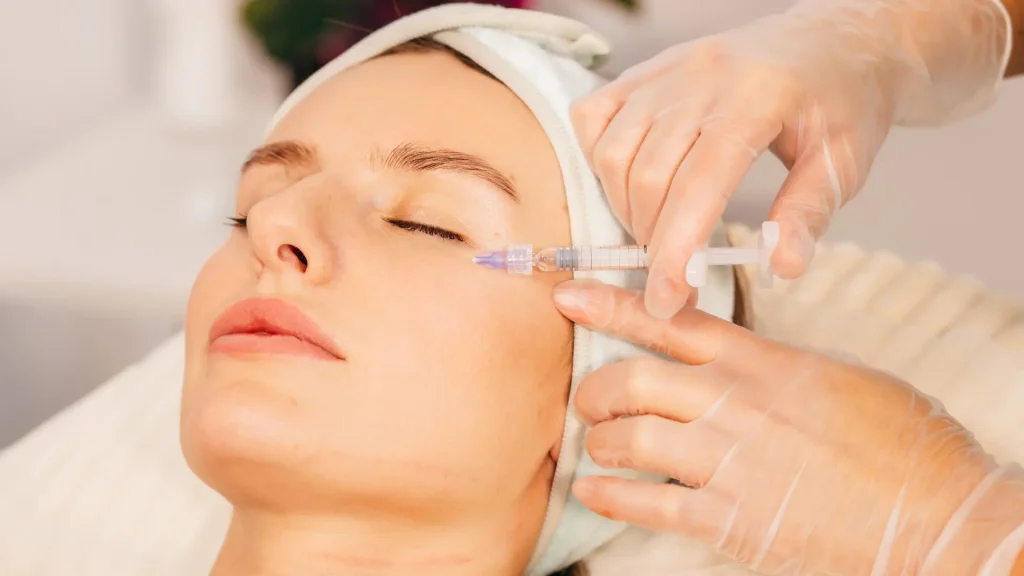
Practitioners must avoid superficial injections, which may lead to local adverse events, such as nodules and papules. Moreover, providers must limit the use of Sculptra to a single regimen of up to four sequential sessions spaced three to four weeks apart.
- Injection Sites for Sculptra Cheek Augmentation: Providers must know the specific aesthetic concerns to determine the most appropriate Sculptra injection sites. Sculptra is typically injected into the bony contours of the face, such as cheekbones. Moreover, injections should be at the region below the bony cheek area.
Providers may need to numb the patient’s treatment areas using lidocaine or numbing cream for their comfort during the procedure. Sculptra injections are required beneath the skin, dermis, and subcutis layer.
Sculptra injections work wonders in the skin’s deep layers and gradually improve the skin’s structure, quality, and firmness. While the recommended treatment protocol for Sculptra is a series of one to four treatments, some patients may benefit from a single treatment.
Individuals need to consult their trusted healthcare provider to determine if they are suitable candidates for the treatment and how many sessions they need for more significant improvement.
Anticipated Results and Long-Term Benefits
Sculptra injection stimulates collagen production, which sets it apart from other dermal filler brands. This mechanism of action leads to gradual improvements in skin firmness and volume and longer-lasting results in the treatment area. Completing the recommended treatment sessions and administration by medical professionals can maximize the Sculptra benefits and deliver optimal outcomes.
According to the Sculptra Frequently Asked Questions, patients can see the results as soon as one month, with sustained outcomes for up to two years. Medical professionals can work with patients to create a tailored treatment plan to maintain the Sculptra cheekbones treatment outcome.
Furthermore, a five-year clinical study that evaluates the effectiveness of Sculptra injections indicates that Sculptra’s efficacy indicates significant enhancements in all treated facial areas and a proven longer-lasting treatment outcome.
According to Fabi et al. (2024), injectable PLLA-SCA treatments were well tolerated and significantly reduced the severity of moderate to severe cheek lines and wrinkles while improving skin quality. The effectiveness was durable over the 12-month study period, with high subject-reported satisfaction, a natural-looking appearance, and enthusiasm for repeat treatments.
Looking at some real-life results from Sculptra treatments, this patient received Sculptra for the face, specifically improving the cheek and cheekbone regions. Their before-and-after photo showcases the visible lift and firmer skin quality in their cheeks after the Sculptra treatment.
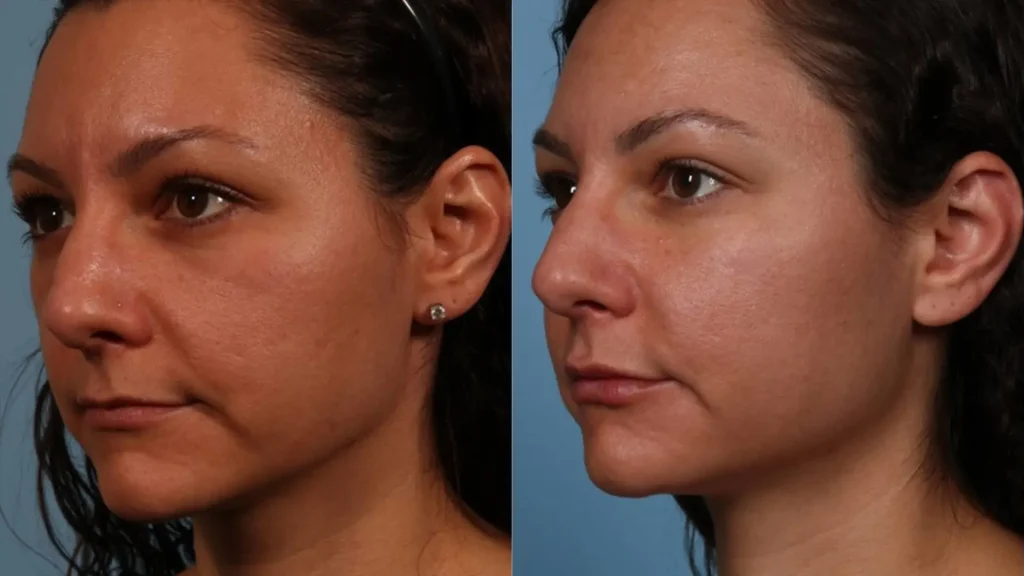 Photo Source: Ran Y. Rubinstein, MD
Photo Source: Ran Y. Rubinstein, MD
An older female individual had lost cheek volume after their facelift. After injections, the facial volume, specifically the cheek region, is restored, delivering a youthful appearance. Sculptra stimulates the patient’s collagen to build up the thickness and improve skin quality.

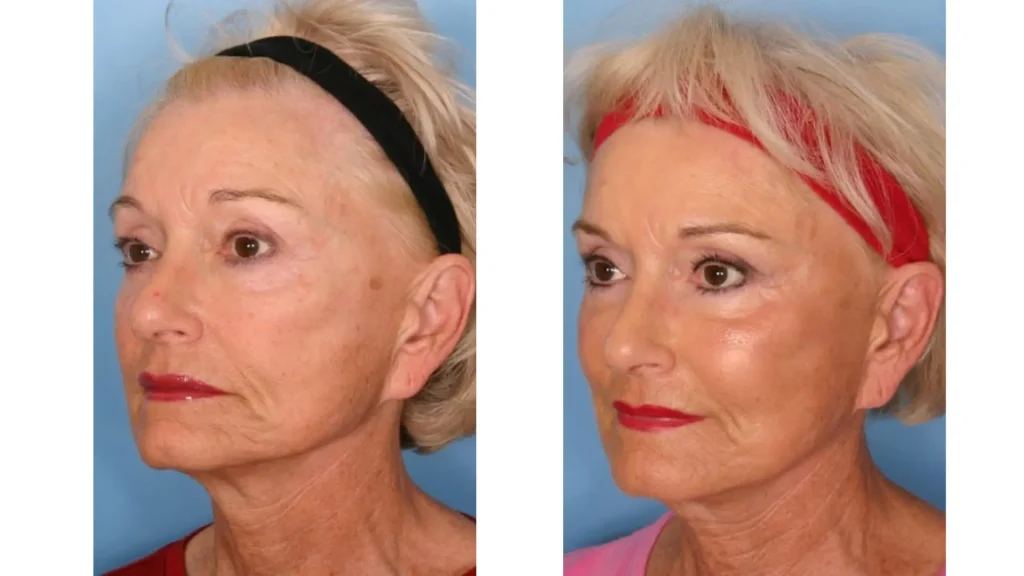 Photo Source: Kent V. Hasen, MD via RealSelf
Photo Source: Kent V. Hasen, MD via RealSelf
Ensuring Safe and Effective Treatment Outcomes
Patients should understand that these injections can cause potential Sculptra side effects after treatments. However, these risks are often minor and temporary, but it’s essential to discuss them with a healthcare provider and understand these possible risks. If these persist, patients must seek immediate medical attention.
- Injection Site Pain
- Redness
- Bruising
- Tenderness
- Itching
- Lumps
- Bleeding
- Swelling
Choosing an experienced provider is crucial for minimizing Sculptra side effects. They should discuss their allergies, medical conditions, and medication to ensure a healthy immune system and body. Provider’s expertise and knowledge about Sculptra, its proper injection technique and sites, and providing patient knowledge can lead to an effective treatment and ensure patient safety.
These practitioners know the best post-treatment care and follow-up protocols for patients undergoing Sculptra cheekbones and augmentation. Massaging the injection area after treatment can offer an even distribution of the medicine, and applying an ice pack after the treatment can lessen the risk of swelling.
Regular follow-up appointments can help providers monitor the patient’s progress and side effects and make necessary adjustments to the treatment. Moreover, avoiding these for the first 24 hours post-treatment can ensure a safe treatment recovery.
- Strenuous Exercise or Activity
- Extreme Temperatures
- Excessive Exposure to Sun and UV Rays
Conclusion
Sculptra has become an effective solution for those seeking defined, firm cheekbones. Its unique role in cheek augmentation, driven by its ability to stimulate collagen production, offers a non-surgical approach to enhancing facial aesthetics. The meticulous patient selection and consultation process ensures that the treatment is tailored to individual needs, providing optimal results.
Providers must precisely execute the injection technique and treatment protocol, ensuring safe and effective outcomes. Sculptra’s anticipated results and long-term benefits, coupled with its commitment to patient safety, make it a viable option for those seeking to enhance their cheekbones.
FAQs
1. What is Sculptra, and how does it work for cheek augmentation?
Sculptra is a poly-L-lactic acid (PLLA) injectable that stimulates collagen production, enhancing the volume, firmness, and quality of the cheeks. Its unique mechanism of action transforms cheek augmentation by addressing facial fat loss and fine lines.
2. Who are the ideal candidates for Sculptra cheekbones and cheek augmentation?
Ideal candidates for Sculptra cheek augmentation are individuals with significant volume loss due to aging or illness and those with visible wrinkles and fine lines on the cheek region. They should have healthy immune systems and not be hypersensitive to Sculptra’s ingredients or components.
3. What should patients expect during the Sculptra treatment process?
Patients should expect a thorough evaluation of their health condition, aesthetic goals, and skin quality during the Sculptra treatment process. The treatment involves a tailored plan, with up to four sequential sessions spaced three to four weeks apart to achieve optimal results. Patients should also be aware of potential side effects and the gradual nature of treatment outcomes.
References
- Cheek Augmentation Cost. (n.d.). American Society of Plastic Surgeons. Retrieved June 14, 2024, from https://www.plasticsurgery.org/cosmetic-procedures/cheek-augmentation/cost
- Sculptra ®. (n.d.). In Sculptra USA. Retrieved June 14, 2024, from https://www.sculptrausa.com/docs/Sculptra-e-IFU
Clinical aesthetics products refer to a category of products used in the field of medical aesthetics or cosmetic dermatology. These products are typically designed and formulated to be used under the supervision of healthcare professionals, such as dermatologists, plastic surgeons, or trained aestheticians. They are distinct from over-the-counter cosmetics in that they often contain active ingredients or formulations that require expertise in their application or administration.
Examples of clinical aesthetics products include:
-
Dermal Fillers: Injectable substances used to add volume, smooth wrinkles, and enhance facial contours. Examples include hyaluronic acid fillers like Juvederm and Restylane.
-
Botulinum Toxin (Botox): Injectables that temporarily paralyze facial muscles to reduce the appearance of wrinkles caused by repetitive movements, such as frown lines and crow's feet.
-
Chemical Peels: Solutions applied to the skin to exfoliate and improve its texture. They can treat acne, pigmentation issues, and signs of aging.
-
Laser and Light Therapies: Devices that emit focused light or laser energy to treat various skin conditions, including acne, scars, and signs of aging.
-
Prescription Skincare Products: Formulations containing active ingredients like retinoids (vitamin A derivatives), hydroquinone, or prescription-strength antioxidants to address specific skin concerns under medical supervision.


